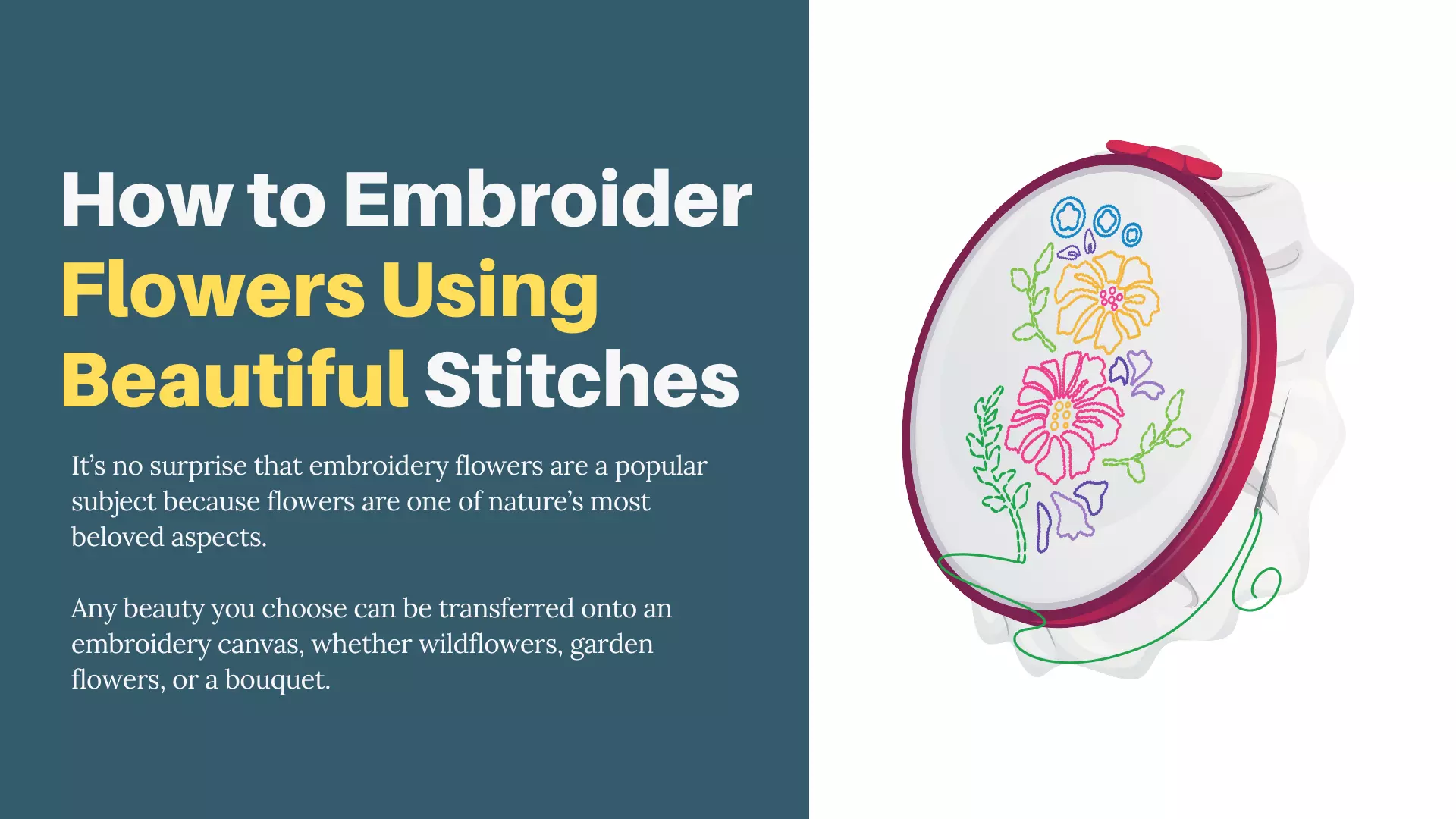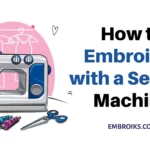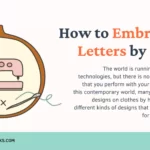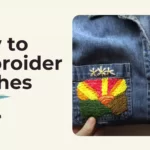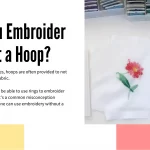How to Embroider Flowers Using Beautiful Stitches
It’s no surprise that embroidery flowers are a popular subject because flowers are one of nature’s most beloved aspects. Any beauty you choose can be transferred onto an embroidery canvas, whether wildflowers, garden flowers, or a bouquet. Selecting the perfect stitch for embroidery flowers is a difficult task. While there are countless creative stitches to choose from, often, the best results can be achieved by sticking to basic embroidery stitches. You can read my article on how to embroider flowers for tips on tools, basic stitches, and how to start and end your work if you are new to embroidery.
Let’s learn how to embroider small flowers.
Material Needed for the Embroidery
1. Hoop:
Embroidery flowers are easiest to sew when the fabric is tightly positioned in a hoop. The fabric won’t pucker when it’s tight in the hoop. The fabric can be moved around hooping on larger pieces of fabric regardless of their size.
2. Thread:
It is possible to sew embroidery flowers using embroidery floss, which is usually divided into 1 to 6 strands. A single strand will give a fine, delicate appearance, and six will provide a slightly chunkier. I usually use six strands, but you may have more patience and prefer a finer look.
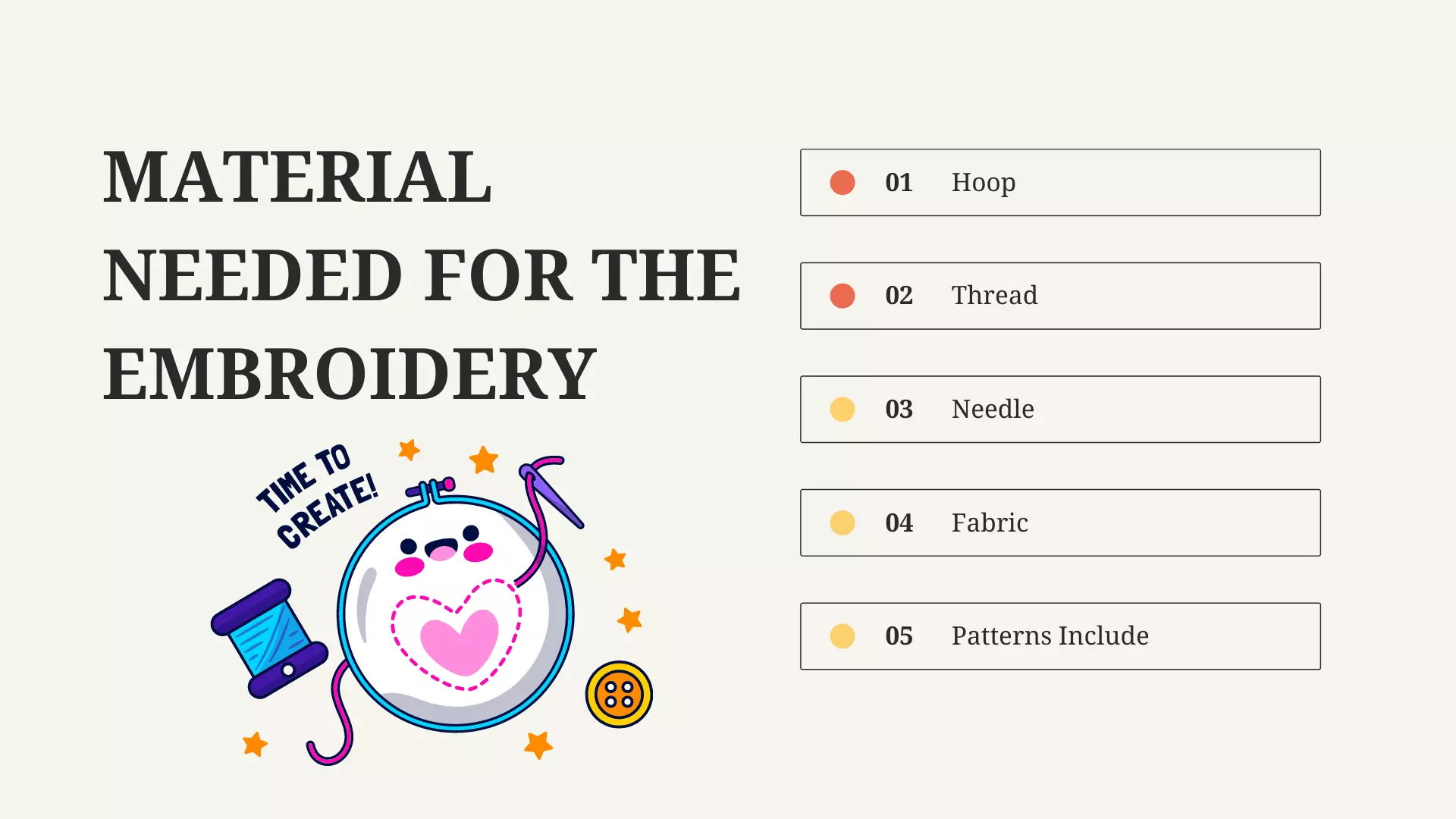
3. Needle:
If you are stitching on fabric, pick an appropriate embroidery needle for the fabric’s thickness and type. The large eye of embroidery needles makes threading easier. You may also need a needle threaded for difficult threading.
4. Fabric:
An open weave fabric is best for embroidery as the needle can move easily between the thread and the fabric. The most common fabrics used for embroidery are linen, calico, and Aida.
5. Patterns Include:
Using a lightbox or brightly lit window, you can draw flower designs on your fabric or trace them.
Stitches for Embroidering Flowers:
Here are 13 stitches that you can use to embroider flowers. A few can be used alone, while others can be combined to create unique looks.
Embroidery Flowers with Backstitch:
Making simple designs with a backstitch is an easy method to outline flowers. The leaves and stems can also be backstitched. Due to its short stitch length, the backstitch is a strong stitch and its threads tend not to catch, making it more durable than some other stitches.
Embroidery Flowers in Buttonhole Stitch:
This stitch provides a very nice definition of flower edges. The buttonhole stitch can be used for wheel flowers as well. French knots can be added to the center if desired. There is a gap between the stitches in my sample flowers, but they can be joined for a solid look. Also, there is a significant difference between blanket stitch and buttonhole stitch in that the buttonhole stitch has a more defined and knotted edge.
You can draw a donut by starting at one corner and working your way around the edge. Remember to pull the knotted fringe outward as you wrap the embroidery thread around the needle.
Flowers Embroidered with Chain Stitch:
Flowers can be embroidered using chain stitch to create stems and long petals or to outline designs. Points 1 and 2 should be as close together as possible for a closed chain stitch. However, they can be farther apart if the stitch is more open.
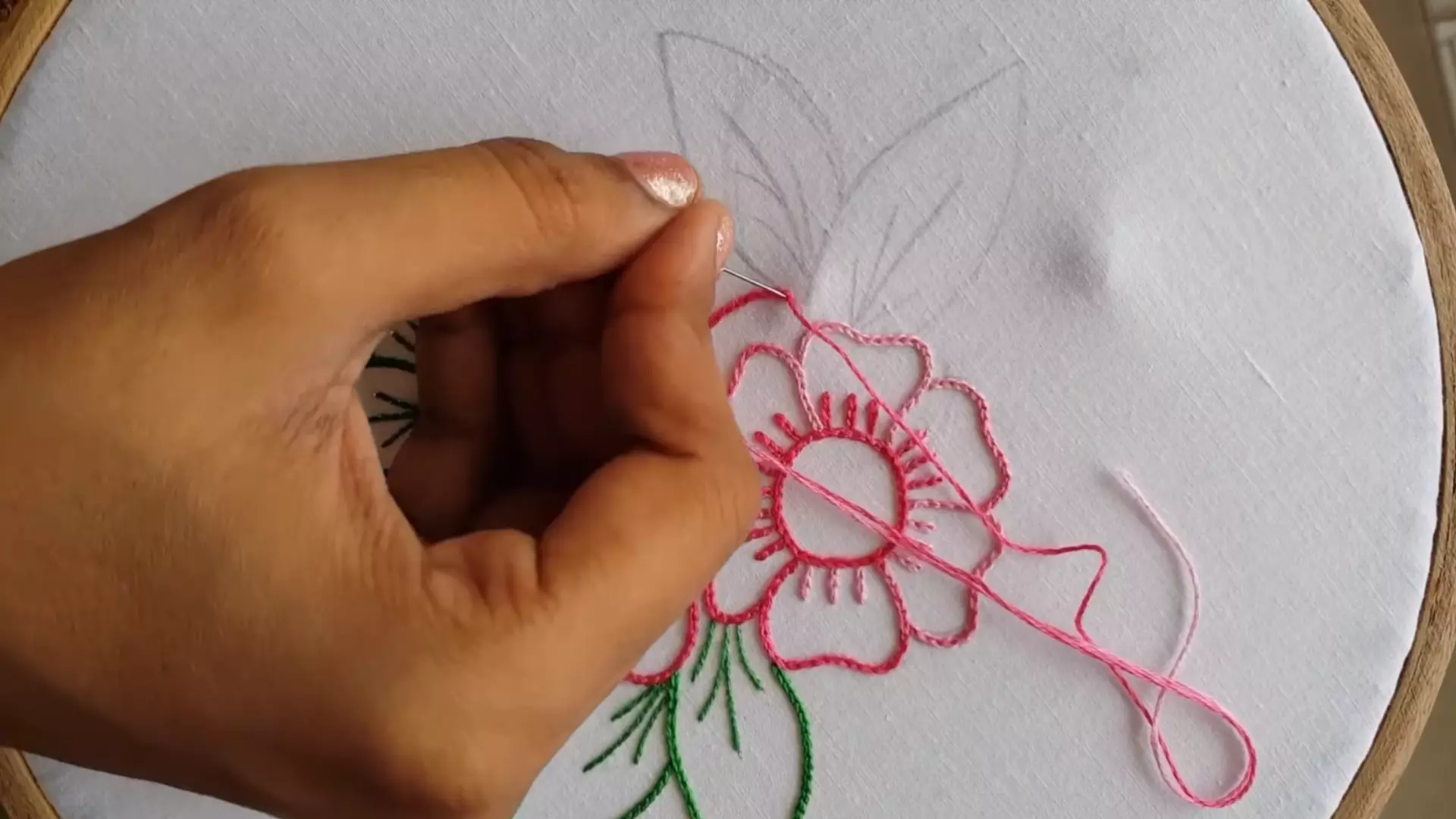
Embroidery Flowers for Couches:
As a stitch for creating textured, chunky outlines, couching is not typically used for embroidery flowers. Make the surface thread of the embroidery with several strands of embroidery floss or yarn
Flowers Embroidered in cross stitch:
Embroidery flowers can be created using cross-stitch. The best results are achieved when multiple colors are used rather than solid colors. Cross stitch patterns for florals can be purchased or you can create your own designs. Fabrics with open weaves, such as linen or Aida, can be used for cross stitching, making counting the threads easier. The cross-stitch article described in my previous post also shows you how to cover larger areas using a quick method quickly.
Embroidery Flowers with Lazy Daisies:
An obvious choice for embroidery flowers is a lazy daisy stitch or a detached chain stitch. By simply naming it, you are already creating a floral motif. As well as representing flowers in a round shape, this stitch can also depict petals strewn along a stem.
Keep the loop loose if you want fuller petals. Petal length is found by measuring the distance between points (2) and (3).
Short and Long Stitches:
The long and short stitch (also known as brick stitch) is made by alternating long and short stitches interlocked, much like bricks. Over satin stitch, this stitch is known for producing fine-looking results with less likely threads to catch. It resembles the stitch made by sewing embroidery.
Flowers with French Knots Embroidery:
You can use balloon knots and French knots to fill in small spaces, create rosebuds, or place the center of some flowers, such as daisies. Lavender is a flower with small petals or a cluster of flowers commonly used with them.
To create a knot, the thread must be twisted around the needle a certain number of times. When turning, keep your back to the hand. Also have a look at, how to embroider a shirt by hand.
Flowers Embroidered with a Running Stitch:
With the running stitch, flower designs can be done quickly and easily, and they can be larger and less detailed. The running stitch is done in a simple up-and-down motion and is usually stitched correctly. You can embroider flowers with or without a hoop in a running stitch. The sewing process without a hoop is more efficient when several stitches are taken simultaneously.
Embroidery Flowers in Satin Flower Stitch:
For flower embroidery, the satin stitch is probably one of the most popular stitches. Filler stitches like this are great as they will adapt to the shapes of the flowers. Besides, the padded satin stitch variation will give the flower a fuller appearance. It can also be used for petals. I used a satin stitch for the center of the flower, but it can also be used for petals.
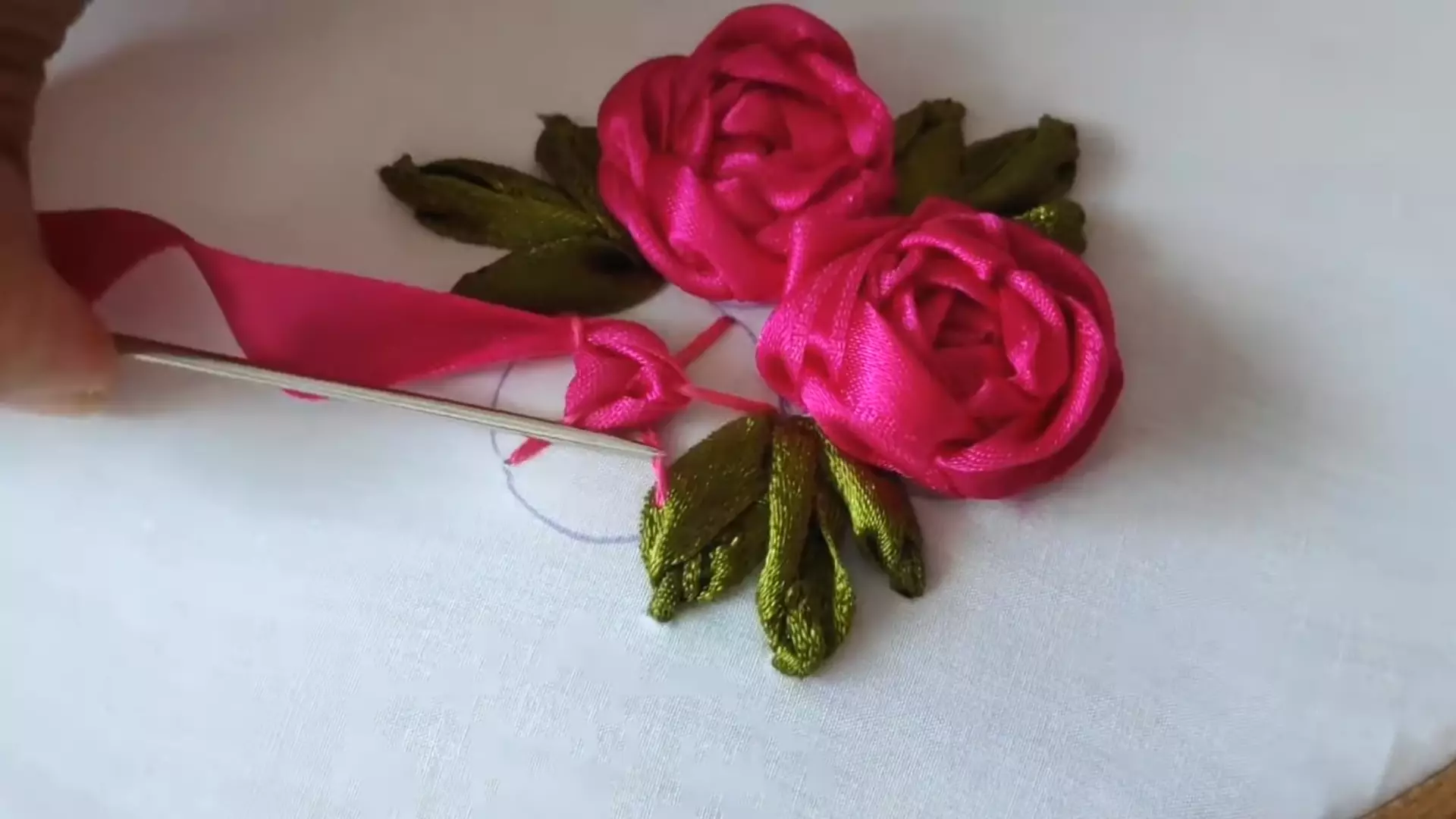
It is always best to begin in the center and work outward. It makes maintaining the shape much easier. You can use a backstitch around the outline if you have more definitions.
Flowers with Seed Stitch Embroidery:
Seed stitch flowers can be stitched together with a backstitch border. Up and down stitches are used to fill larger areas in a random manner. A raised or padded look can also be created with this stitch beneath the satin stitch.
Flowers Embroidered in Straight Stitch:
One of the simplest flowers you can make is straight stitch flowers. The simple way to make this flower is to start in the middle and sew radiating spokes. It’s up to you how many petals you want to make. I left a gap in the center in my example here, but this can easily be closed up if you wish.
Embroidery Flowers made with Web Stitch:
Instantly, whipped spiders, wagon wheels, and web stitches transform into beautiful flowers. The thin rounds of flowers make great fillers for a flower bouquet or garden scene. Please make sure the second color is tight enough to create pretty roses by weaving them to the edge of the weave. Adding variegated thread colors gives the flowers a more realistic appearance. The web stitch rose, and chain stitch embroidery leaves are combined in my sample.
Embroider Flower with Knitting:
In this, you will learn how to embroider flowers with knitting.
Let’s discuss it.
Before you begin embroidery, here are a few things to consider:
The best background to use is Stockinette. Try to refrain from embroidering over stitch patterns with a lot of texture. Your embroidered design will be distracted by a textured background with uneven stitches. Use yarns with similar weights. Make sure the embroidery yarn you choose matches the importance of the knitted fabric. While too-light yarn will only get lost, a too-heavy thread can distort the knitted fabric.
You will need the following materials to embroider your knitted fabric:
An embroidery needle with a large eye Yarn for your flower, 18 inches long, in the same weight as your knitted piece Scissors
Conclusion to Embodiment Flowers:
Embroidery flowers can be combined in an infinite number of beautiful ways. Whatever your floral embroidered art needs, you will be able to find it with names like stem stitch, lazy daisy, spider web stitch, and fly stitch.
With your embroidery flowers now stitched, go on to stitch some leaves to match.
All the information packs are laid down here about how to embroider flowers!
Let’s grab your taste of information about your needs.
Enjoy it!

